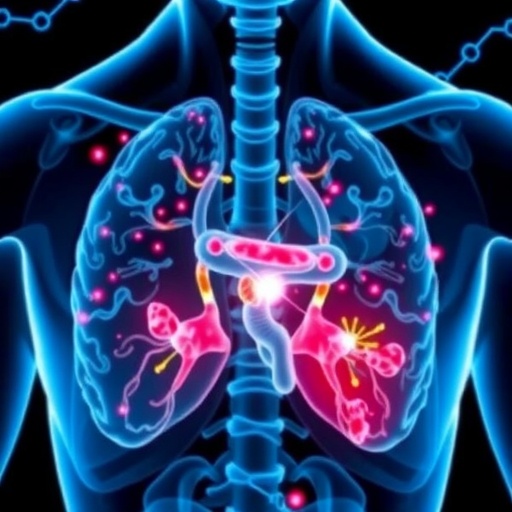In the pursuit of advancing nursing education, a critical area gaining attention is the enhancement of pressure injury assessment skills among nursing students. Recent research led by Erdem Onder and D. Sari, published in BMC Nursing, explores an innovative approach to teaching these vital skills through in-situ simulation and moulage techniques. This randomized controlled trial sheds light on how incorporating realistic, simulated clinical scenarios can significantly improve students’ competencies in identifying and assessing pressure injuries.
Pressure injuries, often referred to as bedsores or ulcers, are localized damage to the skin and underlying tissue, primarily caused by prolonged pressure. These injuries pose serious risks, particularly to the elderly and individuals with mobility issues, making it crucial for nursing students to acquire proficient assessment skills early in their training. The conventional methods of teaching these skills, primarily through lectures and textbook learning, often fall short in preparing students for real-world clinical situations. Recognizing this gap, Onder and Sari designed a study to test the efficacy of in-situ simulation combined with moulage—a technique that uses realistic replicas of injuries to create a more immersive learning environment.
The study consisted of two distinct groups of nursing students: one group engaged in traditional learning methods while the other participated in the simulation-based learning. During the simulations, students encountered scenarios involving patients with varying degrees of pressure injuries, using high-fidelity moulage to accurately reflect the conditions they were likely to encounter in clinical settings. This hands-on approach allowed students not only to assess the injuries but also to practice critical decision-making and clinical judgment skills in a safe, controlled environment.
Results from the trial indicate a marked improvement in the assessment skills of students who underwent the simulation training. Participants demonstrated significantly higher accuracy in identifying stages of pressure injuries and understanding the implications of these assessments on patient care. This outcome underscores the transformative potential of simulation-based learning in nursing education, offering insights into how these methodologies can foster a deeper understanding of clinical practices among future nurses.
In situ simulation also proves advantageous beyond mere skill enhancement. It cultivates essential soft skills, including communication, teamwork, and problem-solving abilities, as students navigate complex patient scenarios together. Such experiences are invaluable, providing students with a stronger sense of preparedness for the unpredictable nature of real-world nursing practice. As healthcare continues to evolve, integrating simulation into curricula may become a cornerstone of effective nursing education.
Furthermore, the study highlights the effectiveness of moulage in promoting a realistic learning atmosphere. By employing life-like representations of pressure injuries, students can better appreciate the emotional and physical burdens these conditions place on patients. Developing empathy and a comprehensive understanding of the patient experience is crucial for fostering compassionate care—an essential component of nursing practice.
The researchers also noted the implications for faculty development. To implement such advanced training methodologies, nursing educators require appropriate training and resources. By investing in the development of faculty members skilled in simulation techniques, nursing programs can revolutionize their approach to teaching and significantly elevate the educational outcomes for students.
Moreover, as healthcare systems increasingly emphasize patient safety and quality of care, enhancing nursing education aligns directly with broader institutional goals. Educating highly proficient nurses is foundational to improving patient outcomes. Reducing the incidence of pressure injuries through better-prepared nursing staff not only benefits patients but also alleviates the economic burdens these injuries place on healthcare systems.
In light of these findings, it is imperative for nursing education institutions to consider revising curricula to incorporate in-situ simulation and moulage. While traditional methods have their place, the dynamic and interactive nature of simulation-based learning provides students with experiences that are more closely aligned with patient care realities. The transition to these teaching methods may also inspire further research into other critical skills and competencies within nursing.
In conclusion, the evidence presented by Onder and Sari serves as an important reminder of the need for continual innovation in nursing education. As the landscape of healthcare evolves, educators must remain adaptable, employing diverse teaching strategies that prioritize experiential learning. Through simulation and moulage, nursing programs can better equip students to face the challenges of clinical practice with confidence and competence, ultimately leading to improved patient care and outcomes.
With growing recognition of the importance of these methodologies, the nursing education community is tasked with disseminating these insights widely. Stakeholders, including policy-makers and educators, must act to facilitate the integration of advanced simulation techniques into nursing curricula. Only then can the future of nursing education truly reflect the realities of modern healthcare and empower the next generation of nurses to thrive in their careers.
Subject of Research: Enhancing pressure injury assessment skills in nursing students through simulation and moulage techniques.
Article Title: Improving pressure injury assessment skills of nursing students using in-situ simulation and moulage: a randomized controlled trial.
Article References:
Erdem Onder, H., Sari, D. Improving pressure injury assessment skills of nursing students’ using in-situ simulation and moulage: a randomized controlled trial.
BMC Nurs 24, 1373 (2025). https://doi.org/10.1186/s12912-025-04049-x
Image Credits: AI Generated
DOI: https://doi.org/10.1186/s12912-025-04049-x
Keywords: Nursing education, pressure injury assessment, in-situ simulation, moulage, clinical skills training.
Tags: effective nursing education methodsenhancing student learning experiencesimproving nursing competenciesin-situ simulation techniquesmoulage in nursing trainingNursing educationpractical skills in nursing trainingpressure injuries in healthcarepressure injury assessment skillsrandomized controlled trial in nursingrealistic clinical scenariosteaching strategies for nursing students





